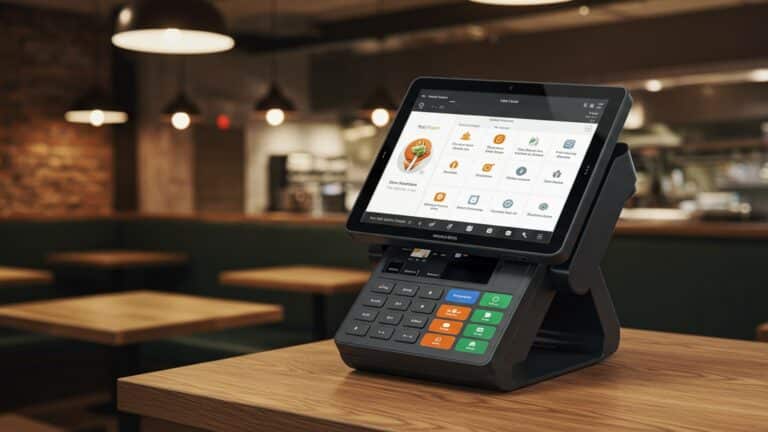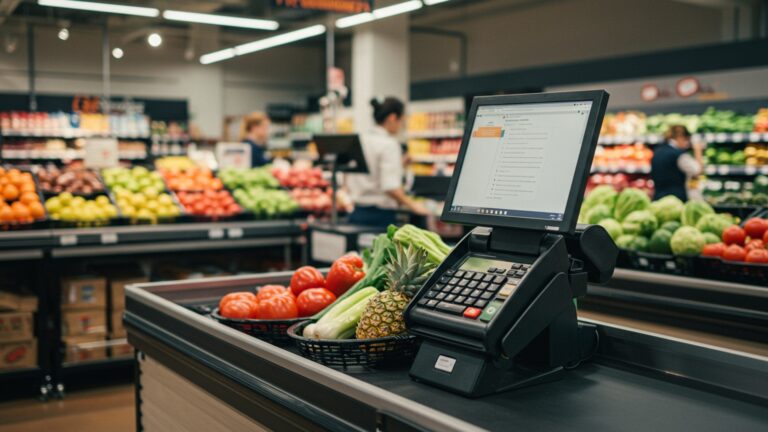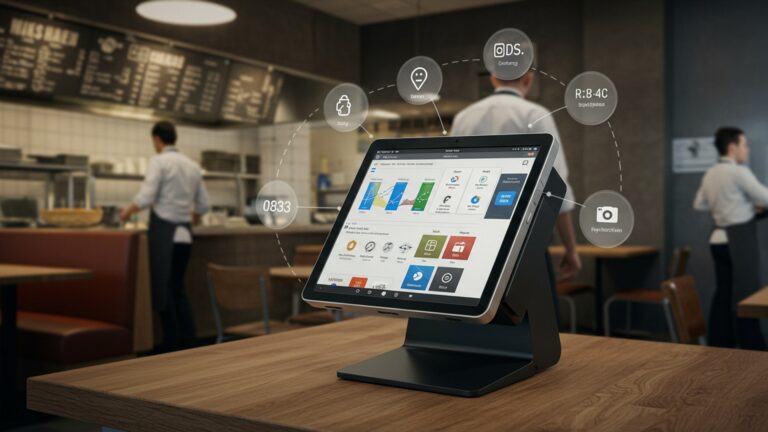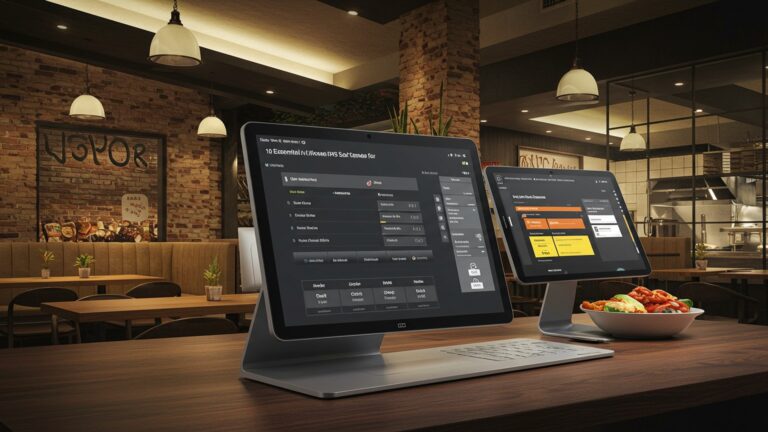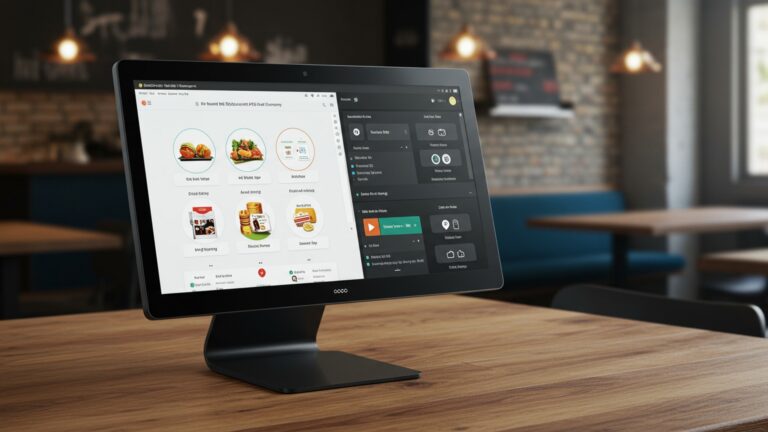Boost Restaurant Efficiency A Guide to Choosing Restaurant POS Software
- restaurant POS software
- restaurant POS software
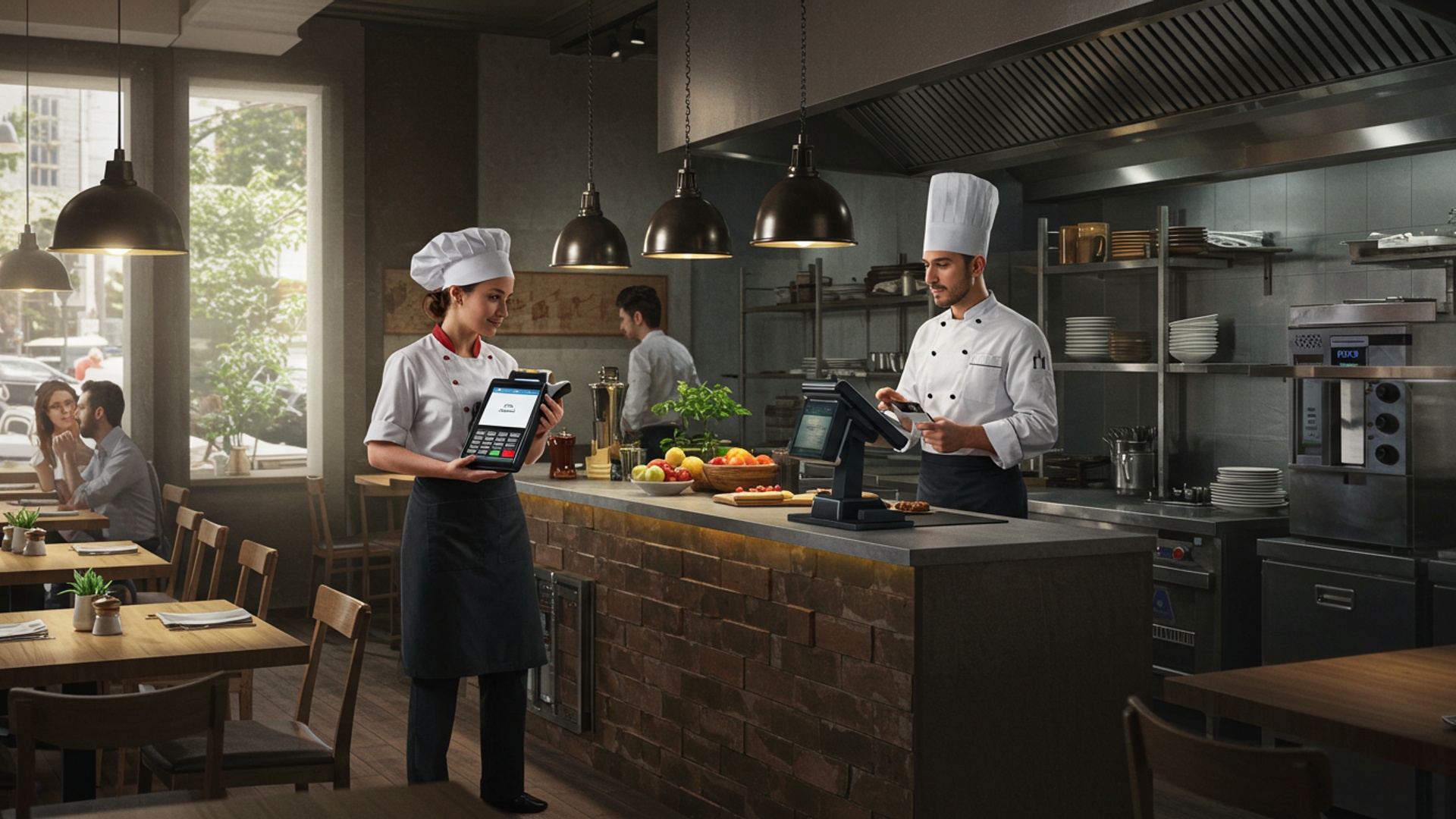
The Pivotal Role of Restaurant POS Software in Modern Operations
In today’s fast-paced culinary world, managing a restaurant efficiently is more challenging than ever. From taking orders and processing payments to managing inventory and staff, the sheer volume of tasks can overwhelm even the most seasoned restaurateur. This is where modern Point of Sale (POS) systems become indispensable. Once merely glorified cash registers, today’s restaurant POS software has evolved into a central nervous system for your entire operation, streamlining processes, reducing errors. ultimately boosting profitability.
At its core, a POS system is the point where a customer makes a payment in exchange for goods or services. But, for restaurants, its functionality extends far beyond just transactions. It’s the hub that connects the front-of-house (FOH) with the back-of-house (BOH), providing a seamless flow of data from the moment an order is placed until the customer leaves. Think of it as the ultimate multi-tasker, handling everything from customized menu options and table management to real-time sales reporting and employee time tracking.
Consider the common pain points faced by many restaurants: manual order errors leading to wasted food and dissatisfied customers, slow payment processing causing long queues, inaccurate inventory counts resulting in stockouts or overstocking. a lack of clear data for business decisions. A well-chosen restaurant POS software addresses these issues head-on, transforming operational chaos into streamlined efficiency. It’s no longer just about ringing up sales; it’s about optimizing every facet of your business to deliver exceptional customer experiences and maximize your bottom line.
Understanding Core Features: What Every Restaurant POS Software Should Offer
When evaluating restaurant POS software, understanding the breadth of features available is crucial. While basic transaction processing is a given, the true power lies in the integrated functionalities that enhance every aspect of your restaurant’s operations. Here are the essential features to look for:
- Order Management and Table Service: This is the heart of front-of-house operations. Key functionalities include:
- Intuitive table layouts and reservation management.
- Easy order entry with custom modifiers (e. g. , “no onions,” “extra cheese”).
- Ability to split bills by item or evenly. transfer orders between tables.
- Seamless sending of orders to the kitchen (Kitchen Display System integration) or bar.
- Payment Processing Integration: A modern POS must support diverse payment methods quickly and securely.
- Acceptance of credit/debit cards (EMV chip readers).
- Support for contactless payments (NFC, Apple Pay, Google Pay).
- Gift card and loyalty program integration.
- Secure tip management and payout functionalities.
- Inventory Management: This feature is critical for controlling costs and minimizing waste.
- Real-time tracking of ingredients and menu items.
- Recipe costing to interpret plate profitability.
- Automated alerts for low stock levels.
- Supplier management and purchase order creation.
- Waste tracking to identify areas for improvement.
- Employee Management and Time Tracking: Simplify HR tasks and optimize labor costs.
- Time clock functionality for accurate shift tracking.
- Payroll integration for streamlined processing.
- Role-based permissions to control access to sensitive data.
- Performance tracking for individual staff members.
- Reporting and Analytics: Data is power. robust reporting provides actionable insights.
- Detailed sales reports (by item, category, employee, time of day).
- Labor cost analysis and productivity reports.
- Inventory variance reports.
- Profit and loss statements.
- Customizable dashboards for quick overviews.
- Customer Relationship Management (CRM) / Loyalty Programs: Build customer loyalty and drive repeat business.
- Customer profile creation and purchase history tracking.
- Integrated loyalty points or rewards programs.
- Email marketing integration for targeted promotions.
- Online Ordering and Delivery Integration: Essential for expanding reach in the digital age.
- Native online ordering platforms.
- Integration with third-party delivery services (e. g. , Uber Eats, DoorDash).
- Menu synchronization across all platforms.
- Kitchen Display Systems (KDS): Enhance kitchen efficiency and accuracy.
- Digital display of orders, reducing reliance on paper tickets.
- Order routing to specific kitchen stations.
- Timers for order preparation to improve speed of service.
- Real-time communication between FOH and BOH.
A truly comprehensive restaurant POS software package will consolidate these functions, providing a unified platform that simplifies operations and empowers informed decision-making.
Types of Restaurant POS Systems: Cloud-Based vs. On-Premise
When selecting restaurant POS software, one of the most fundamental decisions you’ll face is choosing between a cloud-based (SaaS – Software as a Service) system and an on-premise (legacy) system. Each has distinct advantages and disadvantages, making the best choice dependent on your specific operational needs, budget. technical infrastructure.
Cloud-Based POS Systems
Cloud-based POS systems operate entirely online. The software and data are stored on remote servers managed by the vendor, accessible via the internet from any device with a browser or dedicated app. This model is highly flexible and has become increasingly popular due to its ease of use and lower upfront costs.
- Pros: Lower initial investment (subscription model), remote accessibility, automatic updates and maintenance by the vendor, high scalability, robust data backup, often compatible with standard tablets/hardware.
- Cons: Requires a stable internet connection, potential for vendor lock-in, data security relies on the vendor’s protocols.
On-Premise POS Systems
On-premise POS systems, also known as traditional or legacy systems, involve software installed directly on your restaurant’s own servers and hardware. Data is stored locally. the system typically runs on a closed network.
- Pros: Greater control over data and customization, no reliance on internet connectivity for core operations, one-time software purchase (though hardware is separate).
- Cons: Higher upfront cost (servers, licenses, hardware), requires internal IT expertise for maintenance and updates, limited remote access, scalability can be complex and expensive, data backup is your responsibility.
Comparison Table: Cloud-Based vs. On-Premise Restaurant POS Software
| Feature | Cloud-Based POS | On-Premise POS |
|---|---|---|
| Initial Cost | Lower (monthly/annual subscription) | Higher (hardware, software license) |
| Ongoing Cost | Predictable monthly/annual fees, sometimes transaction-based | Maintenance, manual updates, IT staff/contractor fees |
| Accessibility | Anywhere with internet access (e. g. , manage from home) | Limited to local network within the restaurant |
| Data Security | Managed by vendor, usually robust with regular backups | Managed internally; depends on internal IT expertise and resources |
| Scalability | Highly scalable; easy to add terminals or locations as needed | Can be complex and costly to scale (requires additional hardware/licenses) |
| Updates | Automatic and seamless, often without downtime | Manual updates, potentially disruptive, may require IT intervention |
| Hardware Dependence | Less dependent (can use off-the-shelf tablets, specific terminals) | Requires dedicated servers and specific hardware, often proprietary |
| Internet Requirement | Essential for full functionality, though some offer offline mode | Not essential for core operations. needed for external integrations |
Your choice of restaurant POS software will largely depend on your operational model, budget constraints. comfort level with managing your own IT infrastructure. Cloud-based systems are generally preferred by new businesses or those seeking flexibility and lower upfront costs, while on-premise systems might appeal to larger establishments with specific customization needs or existing robust IT teams.
Key Considerations When Evaluating Restaurant POS Software
Thoroughly vetting potential restaurant POS software solutions requires a keen eye for detail and an understanding of how each system aligns with your unique business needs. Beyond the core features and deployment type, several critical factors should guide your decision-making process:
- Scalability: Growing with Your Business:
Your restaurant today might be a single-location cafe. what if you expand to multiple branches or add a food truck? A good restaurant POS software should be able to scale effortlessly with your growth. This means easily adding new terminals, managing multiple locations from a central dashboard. accommodating increased transaction volumes without performance degradation. Inquire about multi-location management features, user license flexibility. the ease of adding new hardware.
- Ease of Use and Staff Training:
A powerful system is only effective if your staff can use it proficiently. An intuitive, user-friendly interface reduces training time, minimizes errors. empowers your team. Look for software with clear navigation, logical workflows. customizable screen layouts. Ask vendors about their training resources, including online tutorials, documentation. in-person training options. A system that’s difficult to learn can lead to frustration, slower service. increased labor costs.
- Integration Capabilities (Third-Party APIs):
Your POS system should not be an isolated island. It needs to seamlessly integrate with other essential restaurant technologies. This includes accounting software (e. g. , QuickBooks, Xero), online ordering platforms, loyalty programs, reservation systems. even employee scheduling tools. Robust API (Application Programming Interface) support is vital for creating a cohesive ecosystem. Ask vendors about their existing integrations and the availability of open APIs for custom connections.
// Example of a hypothetical API call for a POS system to update inventory POST /api/v1/inventory/items/{itemId}/update Headers: Authorization: Bearer [your_api_key] Content-Type: application/json Body: { "quantity": 50, "unit": "kg", "reason": "New shipment received" }This snippet illustrates how a developer might interact with a POS API to programmatically update inventory, highlighting the technical nature of integrations.
- Hardware Compatibility:
Some POS software is hardware-agnostic, allowing you to use off-the-shelf tablets or existing peripherals. Others are proprietary, requiring specific hardware sold by the vendor. Consider your current hardware, your budget for new equipment. the long-term costs of replacement parts. Proprietary hardware can sometimes offer better performance and integration. it might limit your flexibility and increase costs.
- Customer Support and Reliability:
When an issue arises during a busy service, you need immediate support. Evaluate the vendor’s customer service reputation. Do they offer 24/7 support? What channels are available (phone, email, chat)? Is there an online knowledge base or community forum? Look for clear service level agreements (SLAs) and testimonials regarding their responsiveness and problem-solving capabilities. System downtime can be catastrophic for a restaurant, so reliability and prompt support are non-negotiable.
- Security Features and PCI Compliance:
Protecting sensitive customer payment data is paramount. Your restaurant POS software must be PCI DSS (Payment Card Industry Data Security Standard) compliant. Inquire about data encryption, secure network configurations, user access controls. regular security audits. Data breaches can severely damage your reputation and lead to hefty fines, making robust security a top priority.
- Pricing Models (Subscription vs. One-Time Purchase):
As discussed with cloud vs. on-premise, pricing models vary. Cloud-based systems typically involve monthly or annual subscriptions, often tiered by features or number of terminals. On-premise systems usually have a higher upfront software license cost. Be sure to comprehend all costs involved: software fees, hardware costs, installation fees, support contracts. any per-transaction fees. Transparency in pricing is key to avoiding hidden costs down the line.
Implementing Your New Restaurant POS Software: A Step-by-Step Guide
The successful implementation of new restaurant POS software is a process that requires careful planning and execution. A well-managed rollout ensures minimal disruption to your operations and maximizes the return on your investment. Here’s a step-by-step guide to navigate the transition:
- Assessment of Current Needs and Goals:
Before even looking at software, clearly define your pain points with your current system (or lack thereof). What specific problems do you want the new POS to solve? Are you aiming to reduce order errors, speed up service, improve inventory control, or enhance customer loyalty? Documenting your requirements will help you narrow down options and ask targeted questions during vendor demos.
- Vendor Research and Demos:
Based on your needs, research multiple restaurant POS software providers. Read reviews, check industry publications. ask for recommendations. Schedule demos with your top 3-5 choices. During demos, have a prepared list of questions covering all the key features and considerations mentioned above. Ensure key staff members (managers, head chef, even a few servers) are present to provide feedback on usability.
- Actionable Takeaway: Don’t just watch a generic demo. Ask the vendor to demonstrate specific scenarios relevant to your restaurant, like splitting a complex bill, managing a takeout order, or checking inventory levels for a specific dish.
- Negotiation and Contract:
Once you’ve chosen a vendor, negotiate the terms. This includes pricing (software, hardware, installation, training, support), contract length. service level agreements (SLAs). Ensure all costs are transparent and documented. Pay close attention to cancellation policies and data ownership clauses.
- Data Migration and Setup:
This crucial phase involves transferring your restaurant’s data into the new system. This includes:
- Menu items, categories. modifiers.
- Pricing and promotions.
- Employee profiles and access permissions.
- Customer databases (if applicable for loyalty programs).
- Inventory lists and supplier details.
Work closely with the vendor’s implementation team. They may offer tools for bulk data import, often via CSV files, or provide guidance on manual entry. This is also when your hardware (terminals, printers, cash drawers, KDS screens) will be installed and configured.
// Sample CSV structure for menu item import "Name", "Category", "Price", "Cost", "Description", "SKU", "Availability" "Classic Burger", "Entrees", "12. 99", "4. 50", "1/3 lb beef patty..." , "BURG001", "Dine-in, Takeout" "Caesar Salad", "Appetizers", "8. 50", "2. 10", "Crisp romaine, croutons..." , "SALAD002", "Dine-in" - Staff Training:
Proper training is paramount for a smooth transition. Schedule comprehensive training sessions for all staff members who will interact with the system (servers, bartenders, kitchen staff, managers). Hands-on practice is essential. Consider role-specific training to ensure everyone understands their particular functions. Providing a “sandbox” environment for practice before go-live can significantly boost confidence.
- Go-Live and Post-Implementation Support:
Choose a slower period for your initial “go-live.” It’s often beneficial to run the old and new systems in parallel for a short period, if feasible, as a backup. Have the vendor’s support team (or a dedicated internal super-user) on-site during the first few shifts to address any immediate issues. Post-implementation, ensure your team knows how to access support and utilize the system’s full potential. Regular check-ins with the vendor can help optimize usage and troubleshoot lingering problems.
- Actionable Takeaway: Designate a “POS Champion” within your staff. This individual should be highly proficient with the new system and serve as the first point of contact for staff questions, reducing reliance on external support for minor issues.
Real-World Impact: Case Studies and Success Stories
The theoretical benefits of advanced restaurant POS software are compelling. its true value is best illustrated through real-world applications. These examples highlight how strategic POS implementation can lead to tangible improvements in efficiency, profitability. customer satisfaction.
Case Study 1: The Busy Bistro’s Inventory Turnaround
The Challenge: “The Busy Bistro,” a popular mid-sized restaurant, was struggling with inconsistent food costs and frequent stockouts of popular ingredients. Their manual inventory system was time-consuming, prone to errors. made accurate recipe costing nearly impossible. This led to significant food waste and missed sales opportunities.
The Solution: The Bistro invested in a cloud-based restaurant POS software with robust, integrated inventory management features. The system allowed them to:
- Track ingredients in real-time from purchase to plate.
- Input recipes to automatically deduct ingredients as dishes were sold.
- Set up automated alerts for low stock levels.
- Generate detailed reports on inventory variance and waste.
The Outcome: Within six months of implementation, The Busy Bistro saw a dramatic improvement. Food waste was reduced by 18%. ingredient costs were brought under tighter control. Automated purchase orders ensured they never ran out of key items. accurate recipe costing allowed them to adjust menu prices for optimal profitability. The kitchen staff appreciated the real-time stock details, while management gained clear insights into their cost of goods sold, saving countless hours each week that were previously spent on manual counts.
Case Study 2: Multi-Location Chain’s Unified Vision
The Challenge: “Global Bites,” a growing restaurant chain with five locations, faced significant challenges due to disparate POS systems across its branches. Each location operated with different menus, pricing. reporting methods, making centralized management, consistent branding. aggregated performance analysis a nightmare. This inconsistency impacted operational efficiency and customer experience.
The Solution: Global Bites transitioned to a unified, enterprise-grade cloud-based restaurant POS software designed for multi-location management. Key features utilized included:
- Centralized menu management, allowing for instant updates across all locations.
- Aggregated sales and labor reporting dashboards for a holistic view of the entire chain.
- Standardized employee management and time tracking across all branches.
- Integrated customer loyalty program accessible at any location.
The Outcome: The implementation brought unprecedented consistency and control. Menu updates, promotions. pricing could be managed from a single interface, ensuring uniformity. Management could now instantly compare performance metrics across all five locations, identifying best practices and areas needing improvement. The integrated loyalty program boosted customer retention, as patrons could earn and redeem rewards at any Global Bites establishment. The new POS system transformed their operations from fragmented to a cohesive, data-driven enterprise, significantly improving efficiency and brand integrity.
These real-world scenarios underscore how the right restaurant POS software can be transformative, moving beyond mere transaction processing to become a strategic tool for growth and operational excellence.
Future-Proofing Your Investment: Emerging Trends in Restaurant POS Software
As technology continues to evolve, so too does the landscape of restaurant POS software. Investing in a system that can adapt to future innovations is crucial for long-term success. Here are some key emerging trends to consider when choosing your next POS solution:
- AI and Machine Learning for Predictive Analytics:
Advanced POS systems are increasingly leveraging AI and ML to provide deeper insights. This includes predictive analytics for inventory management (forecasting demand based on historical sales, weather. local events), optimized staffing recommendations. even personalized menu suggestions for customers. Imagine a system that tells you exactly how many burger patties to order for next Tuesday based on past sales, local events. the weather forecast.
- Contactless Ordering and Payments:
The demand for contactless interactions has accelerated. Future-proof POS systems fully support:
- QR code-based ordering and payment at tables.
- Self-ordering kiosks that reduce front-of-house labor.
- Mobile payment options (Apple Pay, Google Pay) and digital wallets.
- “Pay at table” options via handheld devices.
This trend enhances customer convenience and improves operational efficiency by reducing manual order taking.
- Enhanced Personalization and Customer Experience:
Beyond basic loyalty programs, future POS systems will offer highly personalized customer experiences. Using AI to review purchase history, dietary preferences. even social media activity (with consent), restaurants can offer hyper-targeted promotions, remember customer preferences. create a truly bespoke dining experience. This level of personalization fosters deeper loyalty and engagement.
- Mobile POS (mPOS) Solutions:
The shift towards handheld, tablet-based POS terminals is continuing to grow. mPOS allows staff to take orders and process payments tableside, reducing walk time, improving order accuracy. speeding up table turnover. This is particularly valuable in busy environments, outdoor seating areas, or for pop-up events. Look for systems that offer robust, durable mPOS hardware with long battery life and seamless integration with the main system.
- Integrated Supply Chain Management:
Beyond basic inventory, the next generation of restaurant POS software will offer more sophisticated supply chain integrations. This means direct digital connections with suppliers for automated ordering, real-time price comparisons. even blockchain-enabled traceability of ingredients from farm to fork, ensuring transparency and quality control.
When selecting your restaurant POS software, inquire about the vendor’s roadmap for future development. A commitment to innovation ensures your investment will remain relevant and continue to provide a competitive edge in the evolving restaurant industry.
Conclusion
Selecting the right restaurant POS is less about a purchase and more about shaping your establishment’s future, transforming daily operations into a seamless ballet of efficiency. It’s the engine that powers rapid order processing, precise inventory control. insightful customer management. My personal tip is to look beyond the flashy features and truly envision how the system integrates into your specific workflow; I’ve seen firsthand how a well-chosen POS, one that effortlessly handles everything from integrated online orders to touchless payments, can significantly elevate a struggling restaurant’s service and profitability. Embrace current trends like AI-driven menu optimization and mobile ordering capabilities, as these aren’t just novelties but crucial tools for staying competitive. Remember, this isn’t merely software; it’s your operational command center. Invest wisely, considering scalability and robust support. you won’t just process transactions; you’ll cultivate an efficient, responsive. ultimately thriving dining experience. For more insights on current restaurant tech, consider resources like Restaurant Business Online.
More Articles
How to Streamline Restaurant Operations with Effective POS Software
A Practical Guide How Mobile POS Software Enhances Customer Service
Learn How Cloud Based POS Software Boosts Business Efficiency
A Comprehensive Guide to Mastering Essential POS Software Features
Discover How to Optimize Your Business with Smart POS Billing Software
FAQs
What exactly is a restaurant POS system?
Think of it as the central nervous system for your restaurant. It’s more than just a cash register; it handles orders, processes payments, manages tables, tracks inventory. helps you keep an eye on your sales and staff performance. It streamlines almost every customer-facing and back-office operation.
My restaurant is doing fine without fancy software. Why should I bother getting a new POS system?
A good POS system can dramatically boost your efficiency. It speeds up order taking and payment processing, reduces errors, helps manage your inventory to minimize waste. gives you valuable insights into your business performance. This all leads to happier customers and a healthier bottom line.
When I’m looking at different POS options, what are the absolute must-have features I should prioritize?
Definitely look for robust order management (table service, takeout, delivery), easy payment processing, inventory tracking, employee management (time clock, scheduling). detailed reporting. Online ordering integration and customer relationship management (CRM) features are also big plusses.
I keep hearing about ‘cloud-based’ POS systems. Is that really better than the old-school software installed on my computer?
Generally, yes, cloud-based is often preferred for restaurants today. It means your data is stored online, accessible from anywhere. updates automatically. It’s usually more affordable upfront, offers better data security. is much more flexible than traditional, on-premise systems which require local servers and manual updates.
What kind of budget should I expect for restaurant POS software? Is it super expensive?
Costs vary widely. Some systems have a monthly subscription fee per terminal, while others might have an upfront hardware cost. Factor in transaction fees, potential installation costs. ongoing support plans. It’s an investment. the right system should pay for itself through increased efficiency and reduced errors.
My staff isn’t super tech-savvy. Will they struggle to learn a new POS system?
That’s a crucial point! Look for systems with intuitive interfaces and easy-to-navigate menus. Many providers offer training. a good system should be designed for quick learning, even for new hires. User-friendliness directly impacts adoption and efficiency.
Once I’ve picked a system, what kind of support can I expect if something goes wrong, especially during a busy dinner rush?
Excellent 24/7 customer support is non-negotiable for a restaurant POS. You’ll want a provider who offers quick, reliable assistance, ideally through multiple channels like phone, chat, or email. Check their reputation for responsiveness and problem-solving, as downtime can be very costly.

